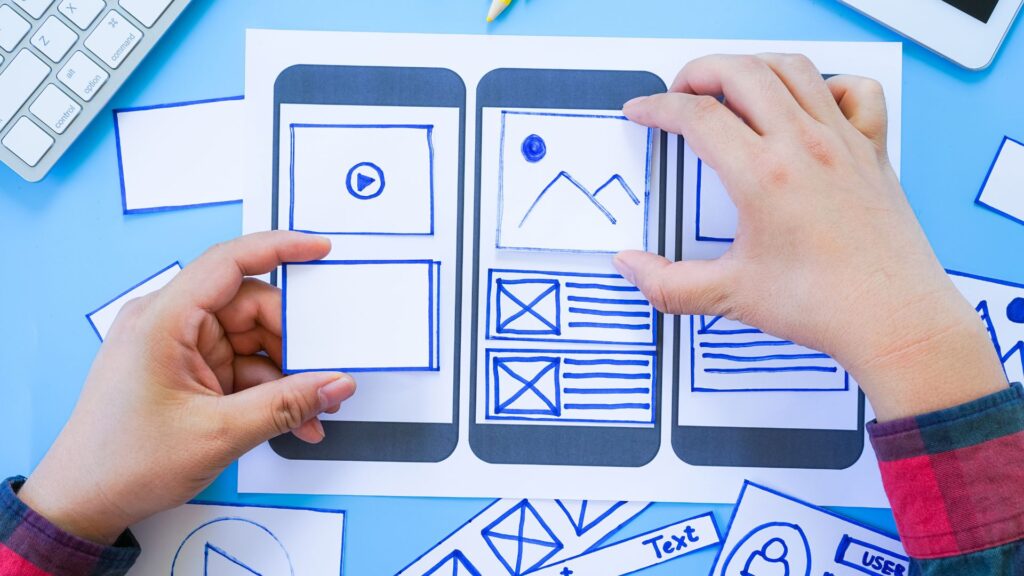
In product development, a journey from idea to market success begins with a well-defined process. It starts with ideation, where creativity flows, and concepts are tested rigorously. Market research and competitive analysis provide the foundation for understanding the target audience. Feasibility studies and risk assessments prepare you for potential challenges. Prototyping and user testing refine your product, ensuring it aligns with customer needs. A strategic approach to product planning and a focus on scalability and quality assurance are essential.
Definition of Product Development

Product development is the process of conceptualizing, designing, and creating a new product or improving an existing one. It encompasses everything from idea generation to market launch and ongoing improvements. Effective product development is the lifeblood of any business. It allows companies to stay competitive, meet customer demands, and drive innovation.
Ideation and Conceptualization
Idea Generation
The journey starts with brainstorming and idea generation. Encourage creativity among your team members and explore various concepts. This phase sets the foundation for your product and is crucial for success.
Concept Testing
After generating ideas, it’s essential to test them. Evaluate the feasibility and potential of each idea to see if it aligns with your business goals. Concept testing helps you filter out less viable ideas and focus on those with the most potential.
Design Thinking
A user-centric methodology that concentrates on resolving actual user issues is called design thinking. It’s about empathizing with your target audience and designing solutions that address their pain points. This human-centred approach can lead to products that truly resonate with customers.
Market Research and Analysis
Market Research
Thorough market research helps you understand your industry, competitors, and customer preferences. Collect data to make informed decisions. This step ensures that your product aligns with market trends and customer needs.
Competitive Analysis
Examine your rivals’ strategies to find market gaps. Determine what sets your product apart and how you can outperform the competition. A thorough competitive analysis informs your product’s unique selling propositions.
Target Audience Identification
Define your target audience. Understand their demographics, behaviours, and needs. Make your product fit their particular needs. By targeting the right audience, you increase the chances of a successful product launch.
Feasibility Study

Assessing Feasibility
Before moving forward, assess the feasibility of your project. Consider technical, financial, and operational aspects. A thorough feasibility study helps you determine if your product idea is viable in the real world.
Risk Assessment
Determine possible hazards and create a strategy to lessen them. Long-term, taking a proactive stance can save you money and effort. Risk assessment ensures that you’re prepared to handle unexpected challenges.
Intellectual Property Considerations
Protect your intellectual property. File for patents, trademarks, or copyrights if necessary to safeguard your innovations. Intellectual property considerations are vital for long-term protection of your product.
Prototype Development
Product Design
Create detailed product designs based on your concepts. These blueprints guide the development process. A well-designed product ensures efficient development and a better user experience.
Prototyping
Build prototypes to visualize your product. Test and refine them until you achieve the desired functionality and aesthetics. Prototyping is a critical step in translating your ideas into a tangible product.
User Testing
Engage real users to gather feedback. Use this input to make necessary adjustments and improvements. User testing helps you create a product that resonates with your target audience.

In the world of business, the journey of product development is an ever-evolving adventure. From the spark of an idea to the full realization of a market-ready product, it’s a process that demands careful planning, creativity, and adaptability. Each step, from ideation and market research to prototyping and launch, contributes to the success of your product.
FAQ’s
What is the primary goal of product development?
The primary goal of product development is to create or enhance products that meet customer needs, solve problems, and generate revenue for the business. It aims to bring innovative and valuable solutions to the market.
How important is market research in product development?
Market research is paramount in product development. It provides insights into customer preferences, market trends, and competition. This information helps businesses make informed decisions, reduce risks, and tailor their products to meet specific market demands.
What is a Minimum Viable Product (MVP) and why is it essential?
An MVP is a product version that has the bare minimum of features needed to appease beta testers and collect input. It’s important because, while saving costs, it enables firms to launch swiftly, validate their concepts, and make modifications based on actual user experiences.
How do I protect my intellectual property during product development?
To protect intellectual property, consider filing for patents, trademarks, or copyrights as appropriate. It’s also vital to maintain records, use non-disclosure agreements, and limit access to sensitive information within your development team. Consulting with legal experts can provide further guidance.
What role does user testing play in product development?
User testing is a critical step in product development. It involves gathering feedback from real users to identify usability issues, uncover improvements, and ensure that the product meets user expectations. It helps create a product that resonates with the target audience, enhancing its chances of success in the market.
